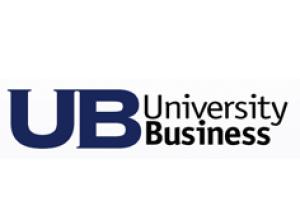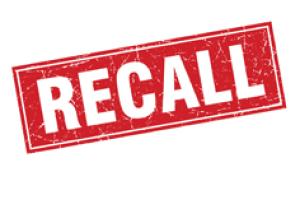Tips to trick-or-treat safely this Halloween

Approximately 133.2 million children went trick-or-treating in 2023 to claim their sweet prize. And if homeowners don't prepare, these visiting goblins, ghosts and ghouls are at risk of an accident or injury.
Keep Halloween safe and fun by taking the time to minimize risks for children and parents around your home.
Clear walkways
In the rush to knock on your door, little ones probably aren't looking for trip hazards such as electric cords, cracks in concrete or a garden hose. Clear your walkways of these trip hazards in the days leading up to Halloween. Before trick-or-treaters begin to arrive, make sure to remove debris, wet leaves or snow or even slippery leftover pumpkin carvings from your walkway and steps.
Skip the candles
Instead of creating spooky lighting inside your jack-o-lantern with real candles, try a glow stick or a battery-operated candle. A flameless candle creates the same flickering effect, but minimizes the risk of fire.
Decorate safely
More than 800 structure fires start each year with decorations, according to the National Fire Protection Association, with 47 percent of decoration fires in homes occurring because decorations are too close to a heat source. Decorations such as dried flowers, cornstalks and crepe paper all ignite easily, so make sure to keep items like these away from open flames and other heat sources. Help prevent trips, slips or falls by keeping walkways, entryways and exits clear of decorations.
Illuminate your walkway and entryway
With long costumes, masks, glasses and other costume elements, trick-or-treaters often have impaired visibility on Halloween. Make it easy for them to find your front door by turning on the outdoor lights and lighting up the walkway with solar lights or flameless candles.
Secure railings
Trick-or-treaters in the U.S. collectively climb about 56.6 million steps every year. Make sure the railings on your steps and on your porch are secure to prevent potentially harmful trips and falls.
Hand out safe candy
Make sure everything you hand out is wrapped in its original packaging and avoid treats that may pose a choking hazard. Approximately 1 in 13 children have a food allergy, so consider selecting candy without allergens. The Teal Pumpkin Project from Food Allergy Research & Education (FARE) is a fun way to create a safer Halloween for trick-or-treaters with food allergies by handing out fun non-candy items.
Restrain pets
With strangers in scary costumes coming to the door, even the most well-behaved pet might get scared and act aggressively. Keep pets away from the door and don't allow visitors to pet them.
Consider extra protection
Child pedestrian injuries are more likely on Halloween than any other night of the year. In the event a trick-or-treater gets hurt on your property and you're found liable for the injury, an umbrella insurance policy can provide the extra protection you need. Learn more about umbrella coverage or contact your independent insurance agent for more information.
Sources
Kids Health
United States Census Bureau
American Academy of Pediatrics
Tips to trick-or-treat safely this Halloween
Approximately 133.2 million children went trick-or-treating in 2023 to claim their sweet prize. And if homeowners don't prepare, these visiting goblins, ghosts and ghouls are at risk of an accident or injury.
Keep Halloween safe and fun by taking the time to minimize risks for children and parents around your home.
Clear walkways
In the rush to knock on your door, little ones probably aren't looking for trip hazards such as electric cords, cracks in concrete or a garden hose. Clear your walkways of these trip hazards in the days leading up to Halloween. Before trick-or-treaters begin to arrive, make sure to remove debris, wet leaves or snow or even slippery leftover pumpkin carvings from your walkway and steps.
Skip the candles
Instead of creating spooky lighting inside your jack-o-lantern with real candles, try a glow stick or a battery-operated candle. A flameless candle creates the same flickering effect, but minimizes the risk of fire.
Decorate safely
More than 800 structure fires start each year with decorations, according to the National Fire Protection Association, with 47 percent of decoration fires in homes occurring because decorations are too close to a heat source. Decorations such as dried flowers, cornstalks and crepe paper all ignite easily, so make sure to keep items like these away from open flames and other heat sources. Help prevent trips, slips or falls by keeping walkways, entryways and exits clear of decorations.
Illuminate your walkway and entryway
With long costumes, masks, glasses and other costume elements, trick-or-treaters often have impaired visibility on Halloween. Make it easy for them to find your front door by turning on the outdoor lights and lighting up the walkway with solar lights or flameless candles.
Secure railings
Trick-or-treaters in the U.S. collectively climb about 56.6 million steps every year. Make sure the railings on your steps and on your porch are secure to prevent potentially harmful trips and falls.
Hand out safe candy
Make sure everything you hand out is wrapped in its original packaging and avoid treats that may pose a choking hazard. Approximately 1 in 13 children have a food allergy, so consider selecting candy without allergens. The Teal Pumpkin Project from Food Allergy Research & Education (FARE) is a fun way to create a safer Halloween for trick-or-treaters with food allergies by handing out fun non-candy items.
Restrain pets
With strangers in scary costumes coming to the door, even the most well-behaved pet might get scared and act aggressively. Keep pets away from the door and don't allow visitors to pet them.
Consider extra protection
Child pedestrian injuries are more likely on Halloween than any other night of the year. In the event a trick-or-treater gets hurt on your property and you're found liable for the injury, an umbrella insurance policy can provide the extra protection you need. Learn more about umbrella coverage or contact your independent insurance agent for more information.
Sources
Kids Health
United States Census Bureau
American Academy of Pediatrics
Tips to trick-or-treat safely this Halloween
Approximately 133.2 million children went trick-or-treating in 2023 to claim their sweet prize. And if homeowners don't prepare, these visiting goblins, ghosts and ghouls are at risk of an accident or injury.
Keep Halloween safe and fun by taking the time to minimize risks for children and parents around your home.
Clear walkways
In the rush to knock on your door, little ones probably aren't looking for trip hazards such as electric cords, cracks in concrete or a garden hose. Clear your walkways of these trip hazards in the days leading up to Halloween. Before trick-or-treaters begin to arrive, make sure to remove debris, wet leaves or snow or even slippery leftover pumpkin carvings from your walkway and steps.
Skip the candles
Instead of creating spooky lighting inside your jack-o-lantern with real candles, try a glow stick or a battery-operated candle. A flameless candle creates the same flickering effect, but minimizes the risk of fire.
Decorate safely
More than 800 structure fires start each year with decorations, according to the National Fire Protection Association, with 47 percent of decoration fires in homes occurring because decorations are too close to a heat source. Decorations such as dried flowers, cornstalks and crepe paper all ignite easily, so make sure to keep items like these away from open flames and other heat sources. Help prevent trips, slips or falls by keeping walkways, entryways and exits clear of decorations.
Illuminate your walkway and entryway
With long costumes, masks, glasses and other costume elements, trick-or-treaters often have impaired visibility on Halloween. Make it easy for them to find your front door by turning on the outdoor lights and lighting up the walkway with solar lights or flameless candles.
Secure railings
Trick-or-treaters in the U.S. collectively climb about 56.6 million steps every year. Make sure the railings on your steps and on your porch are secure to prevent potentially harmful trips and falls.
Hand out safe candy
Make sure everything you hand out is wrapped in its original packaging and avoid treats that may pose a choking hazard. Approximately 1 in 13 children have a food allergy, so consider selecting candy without allergens. The Teal Pumpkin Project from Food Allergy Research & Education (FARE) is a fun way to create a safer Halloween for trick-or-treaters with food allergies by handing out fun non-candy items.
Restrain pets
With strangers in scary costumes coming to the door, even the most well-behaved pet might get scared and act aggressively. Keep pets away from the door and don't allow visitors to pet them.
Consider extra protection
Child pedestrian injuries are more likely on Halloween than any other night of the year. In the event a trick-or-treater gets hurt on your property and you're found liable for the injury, an umbrella insurance policy can provide the extra protection you need. Learn more about umbrella coverage or contact your independent insurance agent for more information.
Sources
Kids Health
United States Census Bureau
American Academy of Pediatrics
Tips to trick-or-treat safely this Halloween
Approximately 133.2 million children went trick-or-treating in 2023 to claim their sweet prize. And if homeowners don't prepare, these visiting goblins, ghosts and ghouls are at risk of an accident or injury.
Keep Halloween safe and fun by taking the time to minimize risks for children and parents around your home.
Clear walkways
In the rush to knock on your door, little ones probably aren't looking for trip hazards such as electric cords, cracks in concrete or a garden hose. Clear your walkways of these trip hazards in the days leading up to Halloween. Before trick-or-treaters begin to arrive, make sure to remove debris, wet leaves or snow or even slippery leftover pumpkin carvings from your walkway and steps.
Skip the candles
Instead of creating spooky lighting inside your jack-o-lantern with real candles, try a glow stick or a battery-operated candle. A flameless candle creates the same flickering effect, but minimizes the risk of fire.
Decorate safely
More than 800 structure fires start each year with decorations, according to the National Fire Protection Association, with 47 percent of decoration fires in homes occurring because decorations are too close to a heat source. Decorations such as dried flowers, cornstalks and crepe paper all ignite easily, so make sure to keep items like these away from open flames and other heat sources. Help prevent trips, slips or falls by keeping walkways, entryways and exits clear of decorations.
Illuminate your walkway and entryway
With long costumes, masks, glasses and other costume elements, trick-or-treaters often have impaired visibility on Halloween. Make it easy for them to find your front door by turning on the outdoor lights and lighting up the walkway with solar lights or flameless candles.
Secure railings
Trick-or-treaters in the U.S. collectively climb about 56.6 million steps every year. Make sure the railings on your steps and on your porch are secure to prevent potentially harmful trips and falls.
Hand out safe candy
Make sure everything you hand out is wrapped in its original packaging and avoid treats that may pose a choking hazard. Approximately 1 in 13 children have a food allergy, so consider selecting candy without allergens. The Teal Pumpkin Project from Food Allergy Research & Education (FARE) is a fun way to create a safer Halloween for trick-or-treaters with food allergies by handing out fun non-candy items.
Restrain pets
With strangers in scary costumes coming to the door, even the most well-behaved pet might get scared and act aggressively. Keep pets away from the door and don't allow visitors to pet them.
Consider extra protection
Child pedestrian injuries are more likely on Halloween than any other night of the year. In the event a trick-or-treater gets hurt on your property and you're found liable for the injury, an umbrella insurance policy can provide the extra protection you need. Learn more about umbrella coverage or contact your independent insurance agent for more information.
Sources
Kids Health
United States Census Bureau
American Academy of Pediatrics













